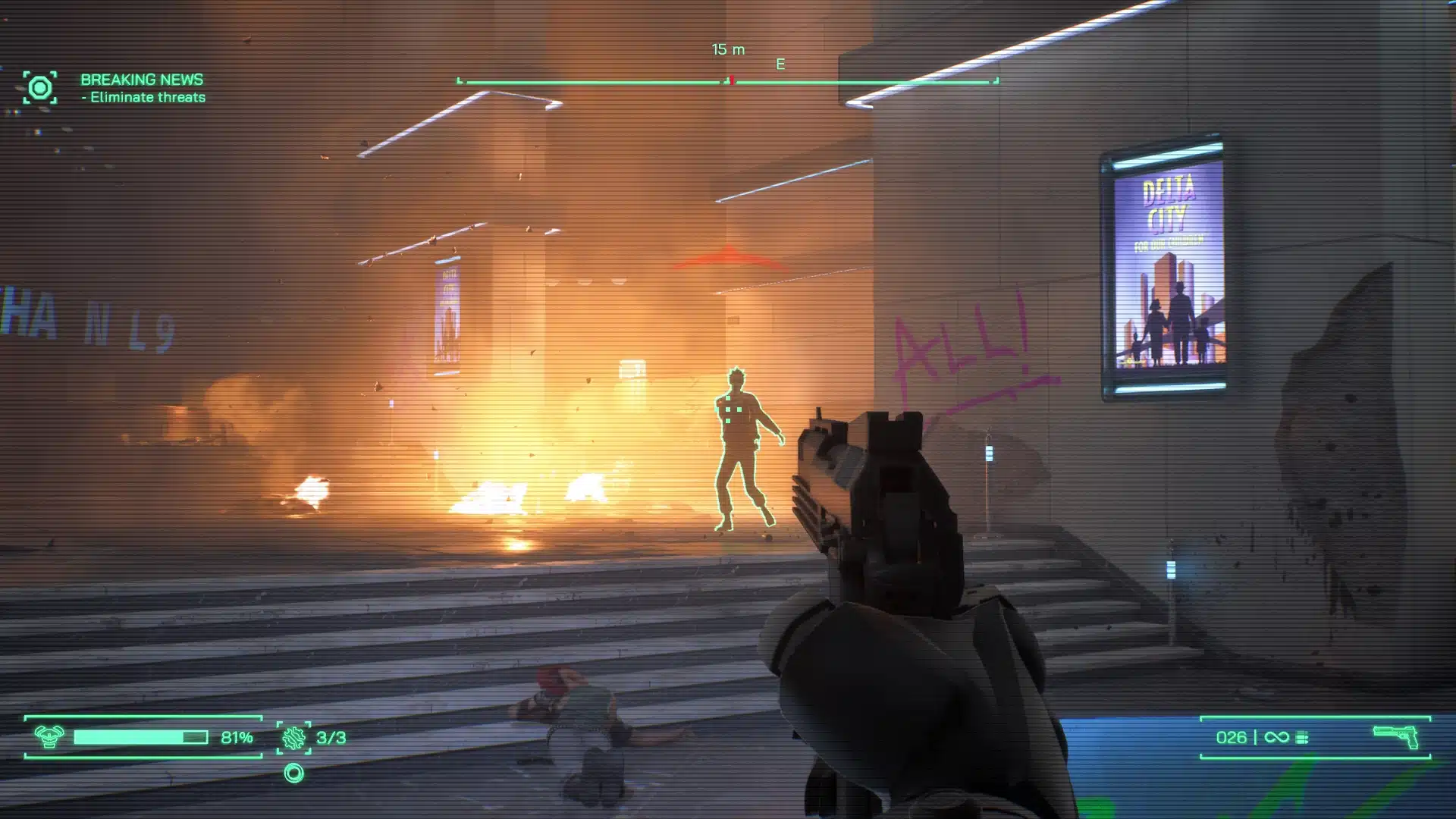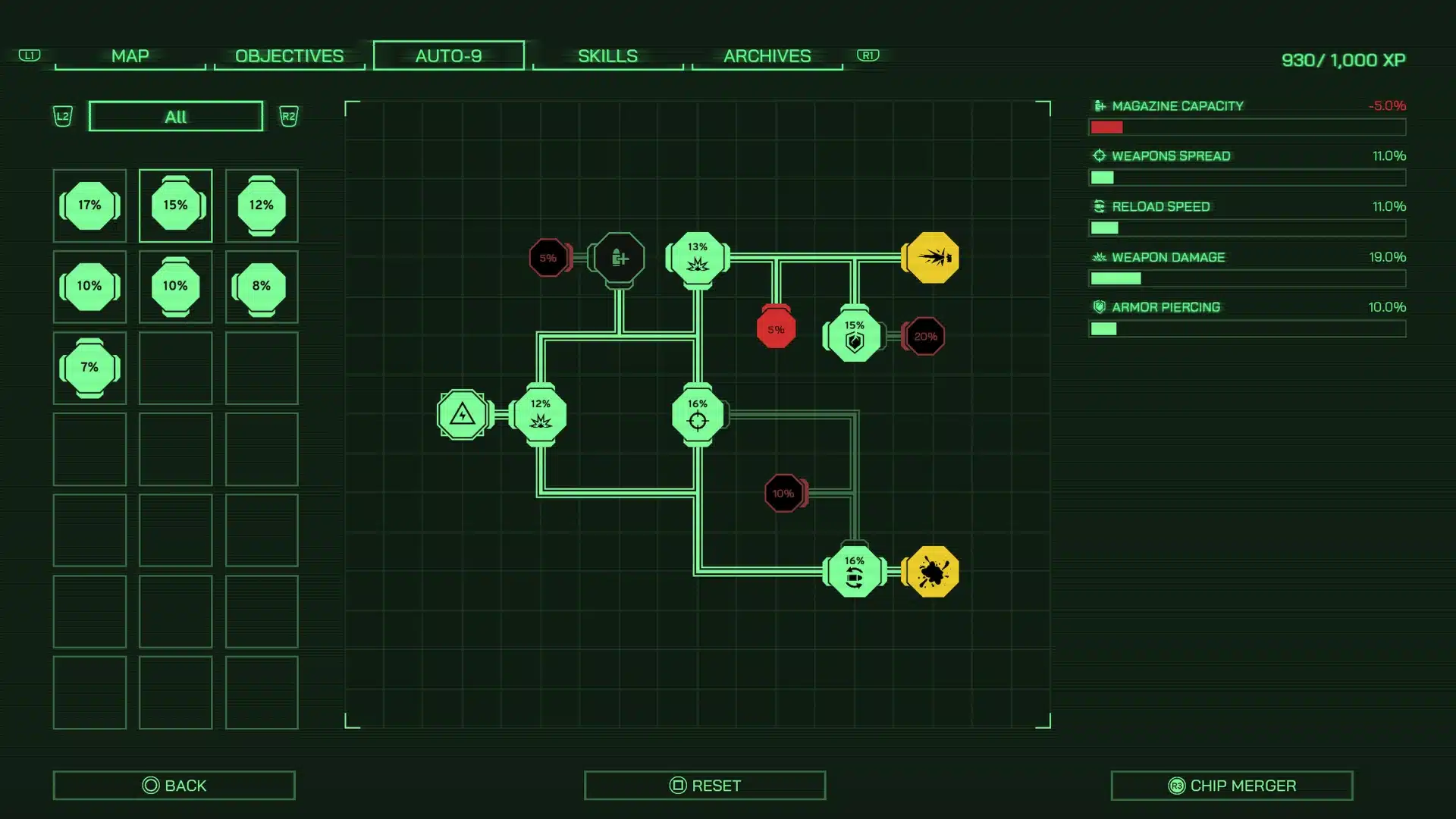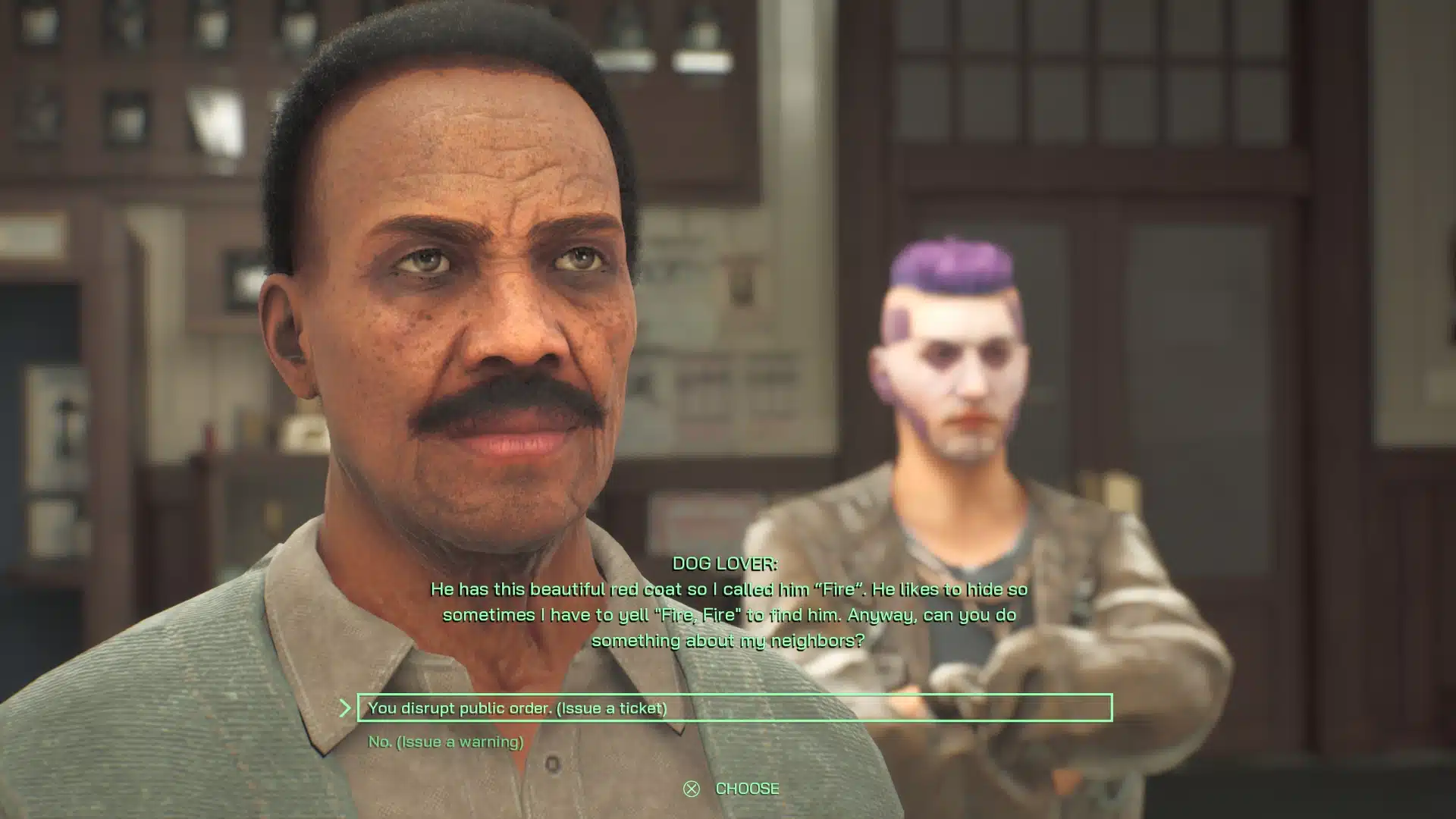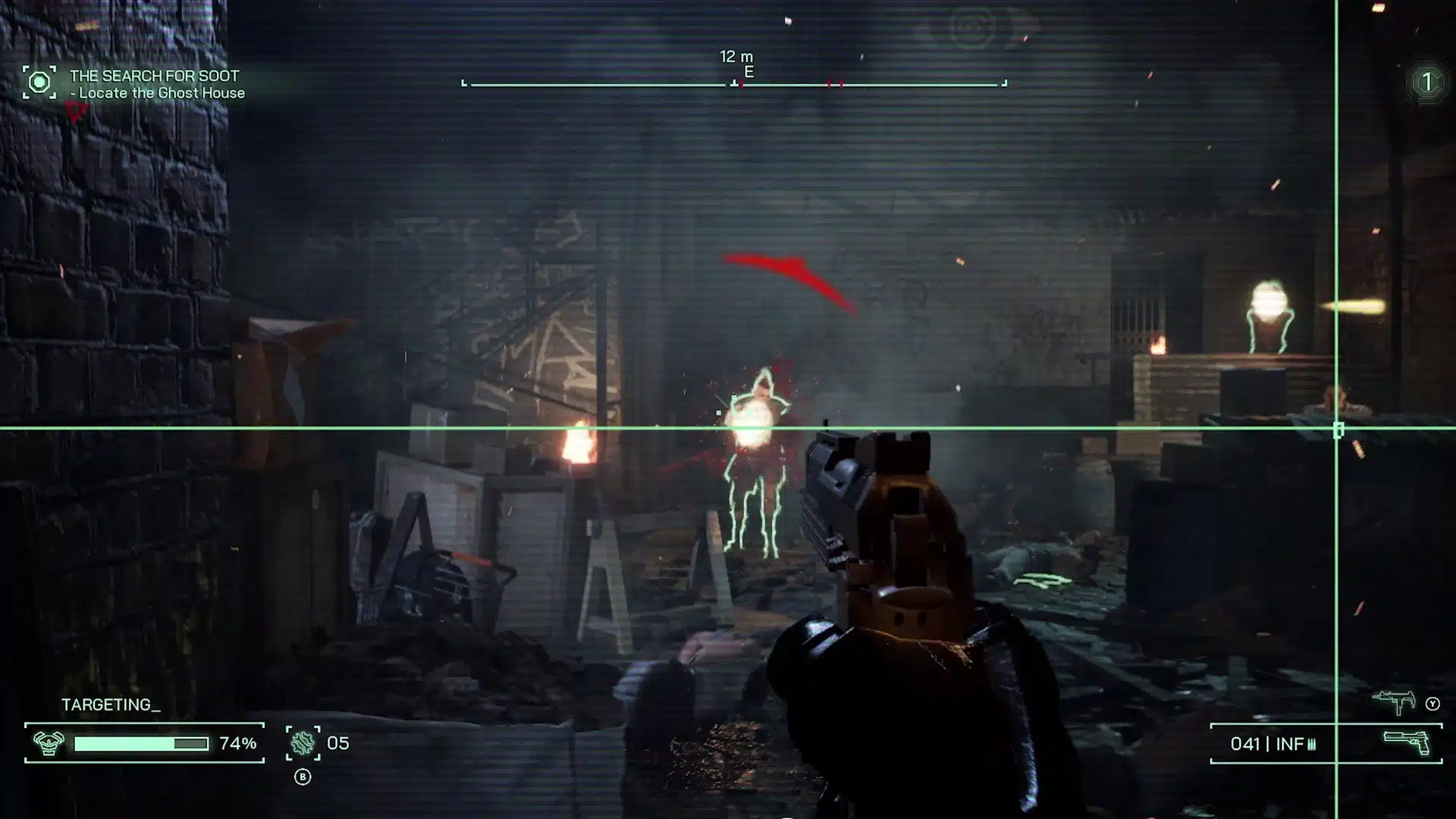RoboCop originally released as a movie in 1987, with its (for the time) hyper-violent titular lead character becoming an iconic crime fighter with plenty to say about the city of Detroit, corporate greed, and what it means to be human. While the series has seen several video games, it has been just over 20 years since the last release, 2003’s RoboCop which released on sixth-generation consoles and PCs. It didn’t fare very well, with an average score around 30-40/100, with at least one reviewer comparing that release to the infamous Superman 64. After two decades, can developer Tevon successfully resurrect the series’ video game adaptation, or is this franchise simply destined to never have a great modern interactive version? We spent time fighting crime in seedy Detroit, and have our review ready to determine just that.
Ripped Right Out of Detroit
RoboCop: Rogue City is a love letter to the original film. While plot-wise, it takes place between RoboCop 2 and RoboCop 3, it sports the occasional satire which made the first film so beloved. You play as RoboCop, otherwise known as Alex Murphy, a law enforcement officer who was killed and resurrected using technology, with his brain and little else hooked up to a cyborg body. As the game takes place between the sequels, you assume control of RoboCop well after he has adjusted to life as a cybernetic lifeform, and your latest overall goal is to take down a drug syndicate that is pushing the dangerous street drug known as Nuke.
True to form, while RoboCop’s creator company Omni Consumer Products (OCP) has a CEO simply referred to as The Old Man, Rogue City’s main antagonist is The New Guy, though we do eventually learn the latter’s name. This is such a funny callback that you can’t help but chuckle, and you can tell the writers of Rogue City had some fun crafting this story. Indeed, the writing of Rogue City is one of the highlgihts of this game, with witty banter or corny one-liners spouted often by a posing RoboCop as he prepares to dole out justice to no-good criminals.
This same satirical spirit is carried throughout the campaign, which is single-player only and should take most players 20-25 hours to complete (longer if clearing all objectives). Occasionally, RoboCop is tasked with rather mundane tasks, such as handling complaints when the front desk is overloaded with concerned citizens, or opening a colleague’s overstuffed locker when it won’t budge for someone with normal strength. In-between missions, the player is free to explore the local area, which can result in finding extra lore, clues, stolen property, and more. If you’re out in the city of Detroit, then you can find violations of the law, such as a car parked in front of a fire hydrant, and you can issue citations (parking tickets) to the owner of the vehicle.

Choose Your Path Wisely
Even side missions, which can be tracked as they are discovered through exploration, have the same care given to them in that they feel ripped straight out of the movies of the late ‘80s/early ‘90s. If you choose to take these missions on, then you’ll help various characters around the city, such as a vagabond turned police informant who wants to help find a missing police officer, a situation which quickly evolves into the hunt for a stolen vehicle of the mayor’s relative, an SUV which was taken by an intelligent yet troubled youth, whose fate you decide as RoboCop can opt to arrest him or let him return the vehicle once it is found again.
The entire game features branching dialogue options, and the player’s choices can affect public opinion towards or against RoboCop. There are numerous opportunities to resort to violence as a way to resolve conflicts, but this is not always the wisest option as it will turn public opinion against you. RoboCop has a skill tree (which is really a skills list) with several different options to tailor to your personal play style. Each increase in skill level comes with passive upgrades to RoboCop’s abilities, or unlocking a new functionality. Even early on in the game, certain chests containing items can only be opened with an Engineering level that needs to be high enough.
Rogue City is a linear game, with occasional areas of a semi-open world where RoboCop can explore either a small section of the city of Detroit, or the local area such as the police station. In these locations, RoboCop can find evidence of wrongdoing, or interact with some of the characters, which organically unlocks side missions. However, leaving an area not only progresses the story, but automatically fails any in-progress side objectives and missions. As the timeline is linear, this means you cannot go back to an area later to complete these missions — it’s now or never, and the game tells you which side missions, if any, you will fail if you proceed.

A Powerful Pistol
It wouldn’t be a RoboCop game without his iconic Auto 9 pistol, and it makes a return in Rogue City, in perhaps the best iteration yet. After a couple of chapters of the campaign is played through, RoboCop unlocks the ability to power up his 50-round firearm using various processors he conveniently finds scattered throughout the city. The upgrade screen is basically a mini-puzzle, whereby you slot in processors of varying strength to turn on circuits. Most of these circuits contain boons to RoboCop’s stats, while a few spots incur penalties instead. The trick is to route the circuit around those penalty areas, or to at least minimize the number of them that are activated. It’s kind of a cumbersome system, but it’s not too difficult to work out a good-enough configuration which gives you the best chance at staying alive. Combat with the Auto 9 pistol feels a bit stiff, but perhaps that is by design as you are playing as a cyborg after all.
Speaking of which, RoboCop actually represents a good challenge even at the Normal difficulty level. In the movies, RoboCop is portrayed as a tough upholder of the law, as a machine that is tough but not invincible. Here things are much the same: while you can go in guns-blazing and generally come out on top of enemies, this isn’t the best course of action as you’ll receive plenty of damage and need to repair yourself using the limited repair charges you are given. You start the game with three and, through leveling up certain skills, can increase their potency, increase the number of charges you can hold, and even unlock alternative ways to heal using the environment – you are an electronic-based lifeform, after all! I found myself occasionally needing to use cover when presented with a roomful of enemies, especially when they used a mounted gun, and while I did feel powerful, that power had its limits, much like in the movies. I feel Tevon got this aspect of RoboCop just right.

Some Rough Yet Blurry Edges
The Unreal Engine 5 is used for Rogue City, though something in the rendering pipeline doesn’t seem to be as optimized as it could be. Graphics stream in under low detail settings, and they usually fade into finer detail as the player looks at various objects in their surroundings, but occasionally you can stare at something, like a random poster in a locker room, and it’ll stay blurry for an inordinate amount of time. The effect is pronounced during cutscenes where two or more people are talking: as the camera swaps views between actors, some odd displacement of their models can briefly be seen before the graphics in that area catch up. Another issue, though less common, results in blurry characters. The game usually blurs out most of the background, and sets its focal point to only the character speaking and their immediate surroundings. This results in a weird sort of glow around whoever is speaking, and occasionally the effect seems to target the wrong object, resulting in the aforementioned blurry character. It’s weird, but not a deal-breaker.
Other small things break the immersion and remind you that you are, in fact, playing a game. NPCs often wait for you to get close enough to trigger a conversation they are having between each other. As soon as they finish speaking, both characters immediately turn their heads towards you. It’s an unintentionally funny bit of oddness that reminds you that all of the other characters in the game are mere puppets, designed and programmed to perform their parts, and upon reaching the conclusion of their part, they then enter a state of uselessness, their duty having been served to the almighty player, whom they then stare at until you leave the area. While it doesn’t happen with every NPC (drunks, for instance, at least don’t stare blankly at you when they are finished with their lines as they are too busy swaying in place), it happens often enough to be noticed by most people.
Verdict
RoboCop: Rogue City is a complete, single-player game, with no DLC currently in sight. Its rendition of Detroit, satire, gory violence, witty and occasionally campy writing and voice acting, all feel ripped straight out of the original movie, while giving us a standalone story that you’ll likely want to see through to its conclusion. Rogue City is a fun interpretation of a 1980’s franchise which has laid dormant since 2014. It’s not perfect, and is a bit rough around the edges, but if you want to feel like the resurrected police officer, this is your best bet. A good-length campaign with solid voice acting and a genuinely entertaining story all add up to a violent, cinematic first-person shooter that doesn’t overstay its welcome. Fans of the original will get a kick out of RoboCop: Rogue City and should pick it up this holiday season.
Score: 8/10
Pros:
- Entertaining story which feels ripped straight from the RoboCop universe.
- A decent-length campaign that doesn’t overstay its welcome
- Good combat options with the Auto 9 pistol
Cons:
- Some odd graphics problems
- Combat can feel a little stiff (perhaps intentionally)
- Linear story can mean leaving some side missions behind
RoboCop: Rogue City review code provided by the publisher. You can read MP1st’s review and scoring policy right here.
